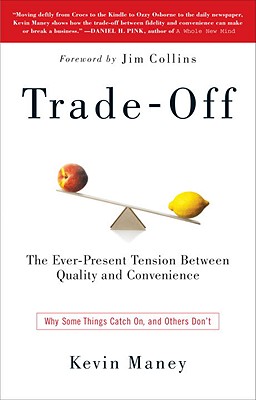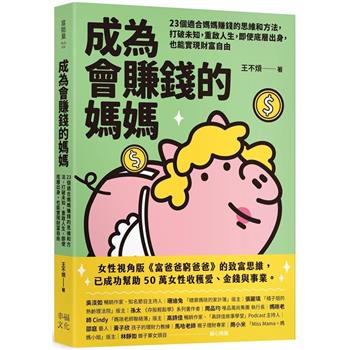A Fresh and Important New Way to Understand Why We Buy
Why did the RAZR ultimately ruin Motorola? Why does Wal-Mart dominate rural and suburban areas but falter in large cities? Why did Starbucks stumble just when it seemed unstoppable?
The answer lies in the ever-present tension between fidelity (the quality of a consumer’s experience) and convenience (the ease of getting and paying for a product). In Trade-Off, Kevin Maney shows how these conflicting forces determine the success, or failure, of new products and services in the marketplace. He shows that almost every decision we make as consumers involves a trade-off between fidelity and convenience–between the products we love and the products we need. Rock stars sell out concerts because the experience is high in fidelity-–it can’t be replicated in any other way, and because of that, we are willing to suffer inconvenience for the experience. In contrast, a downloaded MP3 of a song is low in fidelity, but consumers buy music online because it’s superconvenient. Products that are at one extreme or the other–those that are high in fidelity or high in convenience–-tend to be successful. The things that fall into the middle-–products or services that have moderate fidelity and convenience-–fail to win an enthusiastic audience. Using examples from Amazon and Disney to People Express and the invention of the ATM, Maney demonstrates that the most successful companies skew their offerings to either one extreme or the other-–fidelity or convenience-–in shaping products and building brands.
From the Hardcover edition.
| FindBook |
有 1 項符合
Trade-Off: Why Some Things Catch On, and Others Don’t的圖書 |
 |
Trade-Off: Why Some Things Catch On, and Others Don’t 作者:Maney,Kevin/Collins,Jim(FRW) 出版社:Random House Inc 出版日期:2010-08-17 語言:英文 規格:平裝 / 13.3 x 20.3 x 1.5 cm / 普通級 |
| 圖書館借閱 |
| 國家圖書館 | 全國圖書書目資訊網 | 國立公共資訊圖書館 | 電子書服務平台 | MetaCat 跨館整合查詢 |
| 臺北市立圖書館 | 新北市立圖書館 | 基隆市公共圖書館 | 桃園市立圖書館 | 新竹縣公共圖書館 |
| 苗栗縣立圖書館 | 臺中市立圖書館 | 彰化縣公共圖書館 | 南投縣文化局 | 雲林縣公共圖書館 |
| 嘉義縣圖書館 | 臺南市立圖書館 | 高雄市立圖書館 | 屏東縣公共圖書館 | 宜蘭縣公共圖書館 |
| 花蓮縣文化局 | 臺東縣文化處 |
|
|
圖書介紹 - 資料來源:博客來 評分:
圖書名稱:Trade-Off: Why Some Things Catch On, and Others Don’t
|











